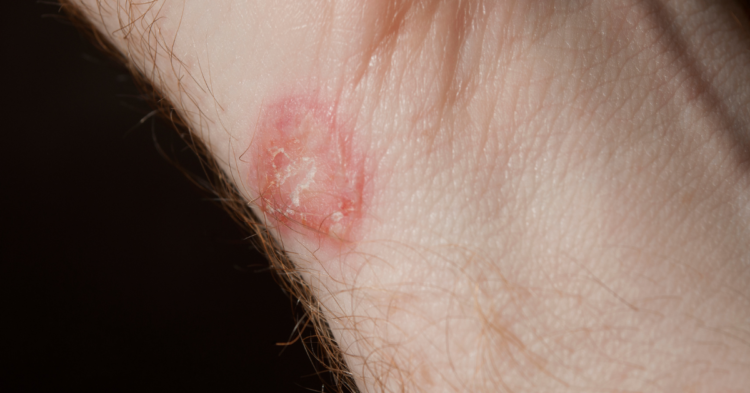Ring worm or dermatophytosis as we call it in the medical field is not actually a parasitic worm. It is really a fungus but that, too, can be passed from your pets to you. We have fantastic homeopathic drops for Ringworm called Tinea Aid (about $15/bottle plus shipping–but I do need to have a client-patient relationship initially which means a phone consultation and associated paperwork for at least one person in the family). These drops are excellent for both animals and people which is good because often this quite contagious fungus will affect the whole family unit!
Photo courtesy of TFH Publications. Thanks!
Keeping the area scrubbed removes the fungal food source (the dead skin cells) and applying iodine to it can help. I usually dispense a Chlorhexiderm shampoo which you can also purchase at most pharmacies these days. Also keeping your immune system and that of your pet healthy with good high-quality foods helps immensely.
Ring worm starts out with a small red often itchy dot which is where the fungus starts on the skin. As the fungi grow, the dot disappears and spreads into a red ring much like a Fairy Ring on your lawn. In animals there is also a dry white raised area that may not be red.
Many members of the Trichophyton spp. inhabit the soil, humans or animals, and are one of the leading causes of dermatophytosis in humans, an infection of the skin, hair, and nails due to these fungi’s ability to utilize keratin (dead skin cells).
In cats the areas that the ringworm start is usually around the whiskers and the base of the ears. It then spreads to the front claws and eventually the legs.
Sixty percent of the ringworm fungi (Trichophyton spp.) will fluoresce bright green under a black light (we call it a Wood’s lamp) and that is one way a doctor or veterinarian will be able to diagnose ringworm (but you can do that, too!) If it doesn’t fluoresce it doesn’t mean that is isn’t ringworm. The next step is to take a sample of the hair or skin cells and grow it on some DTM media which has nutrients in it that the fungus needs to grow. The challenge with this diagnostic technique is that is takes about 10 days to see the results of the test.
Reference: https://www.catsofaustralia.com/ringworm-in-cats.htm
This is what we see under the microscope when we take a sample of the fungi that has been grown on the special DTM media
References and links:
- Ringworm pictures: https://www.lib.uiowa.edu/hardin/md/cdc/3050.html
- Ringworm article: https://www.healthscout.com/ency/68/75/main.html
- Risk Factors: https://www.mayoclinic.com/health/ringworm/DS00489/DSECTION=3
- Good pictures: https://www.petalk.com/ringworm.html
- Dog ringworm pictures: https://www.bing.com/images/search?q=ringworm+in+a+dog+photo&qpvt=ringworm+in+a+dog+photo&FORM=IGRE

